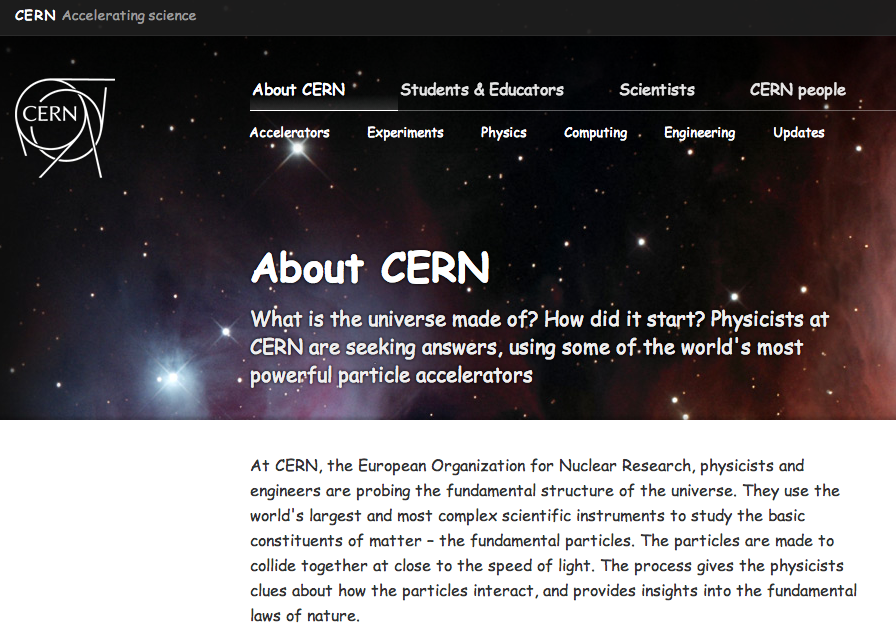
CERN Switches to Comic Sans for April Fools' Day

April Fools' Day is arguably the worst day on the Internet unless you like lame jokes and being lied to. Despite myself, I actually laughed this morning when I went to the website of CERN — the Geneva-based organization that runs the world's biggest atom-smasher — to find that all of the text had been converted to Comic Sans, that reviled, springy-looking script that lurks on Web 1.0 websites and bad PowerPoint presentations. Well played.
CERN officials made an announcement about the switch in their latest press update:
"From today, all of CERN's official communication channels are switching to exclusive use of the font Comic Sans. The move comes after weeks of deliberation by CERN management and top web designers about how best to update the image of the laboratory for this, its 60th anniversary year.
'This is an important year for CERN and we wanted to make a bold visual statement,' says CERN Head of Communications James Gillies. 'We thought the most effective way to communicate our research into the fundamental structure of matter at the very boundaries of technology was by changing the font.' For Gillies, Comic Sans says: 'This is a serious laboratory, with a serious research agenda.' - 'And it makes the letters look all round and squishy,' he adds."
Kidding aside, CERN hosts some of the world's most complex experimental physics machinery, including the Large Hadron Collider, a 17-mile (27 kilometers) underground ring where scientists finally confirmed the existence of the Higgs boson, a long-predicted subatomic particle that helps explain the existence of mass.
Follow Megan Gannon on Twitter and Google+. Follow us @livescience, Facebook & Google+. Original article on Live Science.
Sign up for the Live Science daily newsletter now
Get the world’s most fascinating discoveries delivered straight to your inbox.










